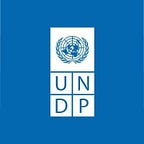Armenian women take the political stage
by Karen Cirillo and Jodi Hilton
In the small village of Getik, Arpine Gyulumyan runs a bed and breakfast with her family. But she is also an engineer, a social worker, and a community council member.
While few residents venture far from their farming and cattle breeding traditions, Arpine left to study electrochemical technology in Yerevan. But she returned to Getik after graduation, where there were no jobs in engineering.
In Armenia, women are more likely than men to hold higher education degrees, yet they have a much lower presence in government, both locally and nationally. There is a new quota system, currently implemented in the three biggest cities, which is a positive effort to change this.
One organic way of getting women into politics is by starting at the local level. When women are elected to serve their communities, they must tackle issues familiar to them, which allows them to demonstrate strong leadership.
Arpine is one such example. Her experience as a social worker — knowing the issues that concern her community — helps her work as a councilor.
At 33 years old, she became the first woman community council member elected in her village. Her main goal is to raise the living standards in her community and the region.
Arpine also wants to make women’s issues more important and strengthen the role of women in the public life of the community.
She teaches an early child development class and she plans to create a women’s club as a safe space to discuss issues of importance to local women. Many women in the region, for instance, don’t realize they are victims of domestic violence or that they can work.
At 22, Ani Asatryan has a five-year plan to become mayor of Spitak, a town of 3,000.
Officially Spitak has a population of 13,000 but like many areas in Armenia, a number of its residents have left to find work elsewhere. Improving her town, Ani believes, begins with the younger generation.
“My aim is not just solving small problems, but mentoring other active youth on how local governance works.”
Ani has been a political activist for years. She wants to see more women in government, but wants those women to represent a platform of gender equality.
Even as members of parliament or ministers, women often can’t act independently, having to follow party platforms which are often inherently blind to gender equality. And locally-elected women often feel they must conform with the agenda of their men counterparts, neglecting issues important to women.
“I aim to bring women’s issues into politics. Today, there are women in politics, even ministers, but the glass ceiling is still a problem in Armenia — there are social limits.”
In such a patriarchal society, there need to be new mechanisms for women to get into politics — ways of nurturing existing women politicians while identifying new candidates. Trainings and workshops can introduce and strengthen women politicians, but there also needs to be support from men in the parties, a shift in culture, and a way to fight discrimination.
Anna Begunts is a high school teacher, a deputy principal, and a local councilor in her village of Sis — one of two women on a council of eleven. Anna has been in local politics for six years, twice elected as a village councilor.
Many problems contribute to Sis’ poverty — a climate too dry for successful agriculture, unreliable transportation, outward migration for jobs, poor integration of refugees, and the effects of toxic waste dumps. Anna’s work is focused on improving infrastructure in the village and fighting to reduce air pollution from a nearby waste facility.
“As an Armenian citizen, I want my country to be strong. We don’t have good living conditions here.”
Getting involved in her community was a conscious choice, and one she hopes will be replicated by the next generation. She works hard at being a role model for the next generation. “I’m trying to get my students to achieve the things I couldn’t achieve in my life.”
Anna’s biggest battle has been over the local trash dump, where city trash is burned in the summer. Without a trash-processing factory, the air is filled with dangerous gases and the water becomes contaminated, increasing the risk of disease.
She has been working on this since her first day as councillor. They twice wrote letters to appeal to the government, but thus far there has been no solution.
Anna, of course, will continue to fight until she sees a solution.
UNDP’s Women in Local Democracy programme has been working since 2012 to promote equality between women and men, including equal representation of women in decision-making processes. Both Arpine and Anna got involved in politics after attending local trainings and conferences organised by the programme.
UNDP assisted the country to draft the Law on Equal Rights and Equal Opportunities for Women and Men, which was adopted in 2013. Armenia’s new quota system aims for women achieving 25% participation in parliament and big cities’ government.
In the fall of 2016, 702 women ran for local elections from all ten regions of Armenia, and 500 women were elected as heads of community and local councilors. Since 2012, the number of women candidates and elected women increased by 17% and 24% respectively.
The outlook is promising. There is an emerging cadre of capable and motivated women willing to take the lead. In many communities, women are shifting the borders of their traditional roles and breaking stereotypes, and young leaders are emerging as community mobilisers. In this time of change, women and youth are important players in designing creative solutions for new policies, services, and programmes for more cohesive and democratic communities.
Photos: Jodi Hilton / UNDP
If you enjoyed this piece, remember to click the heart below and recommend the story to others.
